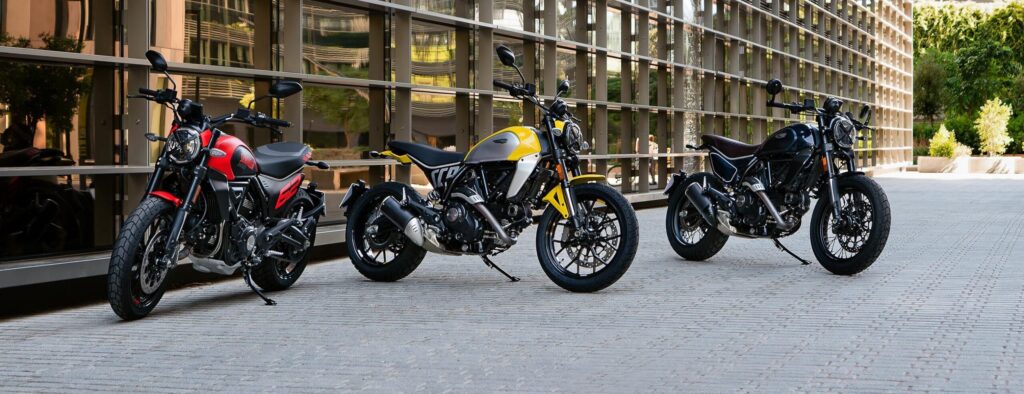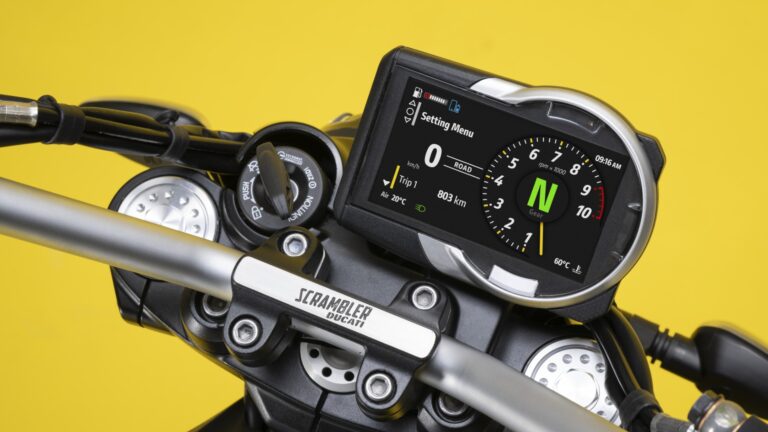Qt Group has announced a partnership with Ducati to support its implementation of next-generation digital displays on its motorcycles. The new Ducati Scrambler 2023 model is the first one to apply the Qt for microcontroller (MCU) technology, a graphics framework and toolkit that delivers smartphone-like user experiences on resource-constrained devices.
The convergence between brand style and graphics is a fundamental element for the success of prestigious motorcycles. Ducati needed a display that offered reactivity, performance and style. The complex cluster design includes splash screen animations, dynamic multilingual menus that change position and size on the screen for optimal readability, and real-time interaction with motorcycle data.
“The market requires modern, rich and sophisticated graphics, with dynamic visuals that adapt to world events,” said Claudio Mariani. director of electronic systems at Ducati Motor Holding. “Acceleration, braking and RPMs should be reflected on the screen in real time, with a constant data flow happening in the range of milliseconds. Our aim was to achieve smartphone-like performance without the corresponding gigahertz clock capabilities.”
“Riding a Ducati is just an all-around cool experience,” said Miao Luo, head of automotive and design tools at Qt Group. “We wanted to make sure the solution we give them for their digital displays allows their motorcycles to continue living up to the ‘cool factor’ that has defined their brand for years. The result is an extremely fluid and aesthetically animated experience via the motorcycle display.”
The new Ducati Scrambler uses an MCU to power its digital display, as this technology offers robust tools for applications requiring snap boot, accurate timing, thermal efficiency and real-time control. However, without the right software development framework, running graphical interfaces on MCU-based embedded systems may suffer from resource limitations. Qt says that its MCU graphics framework allows the Scrambler to achieve high-performance ‘quasi-3D graphics’ using only 1.5MB of RAM. Qt for MCUs runs on either bare metal or real-time operating systems with optimized libraries tailored to the MCU and low-end MPU footprint.

Ducati adopted Qt for MCUs on bare metal to create a nimble system stripped out of all unnecessary elements, and at the same time to develop the UI on PC before the actual hardware was ready.
“With Qt technology, we’ve been able to develop and test the UI on PC while a second team developed the hardware from bare metal,” said Amilcare Franciosi, automotive team leader at Egicon, the Tier 1 supplier in charge of creating the Scrambler’s cluster. “At the time we moved to integration, the UI graphics and functionality were already tested and only needed to be verified on the actual hardware. Such parallel workflow reduced our delivery time by over 50%.”
“The partnership serves as yet another example of the automotive industry continuing along the path of software-defined vehicles,” concluded Luo.
The news follows Qt’s research this year showing that vehicle manufacturers are directing development budgets toward improving user interfaces and the user experience (UI/UX) to enhance their competitiveness. In a survey, 52% of respondents said they plan to spend at least 30% of their product development budget on improving UI/UX in vehicles over the next 12 months, with 23% planning to invest 40-49% of that budget in UI/UX. In contrast, only 25% of respondents allocated above 30% of their budget to UI/UX in the previous year, indicating growing recognition of the link between UI/UX and business success.
For more on displays, please click here.



